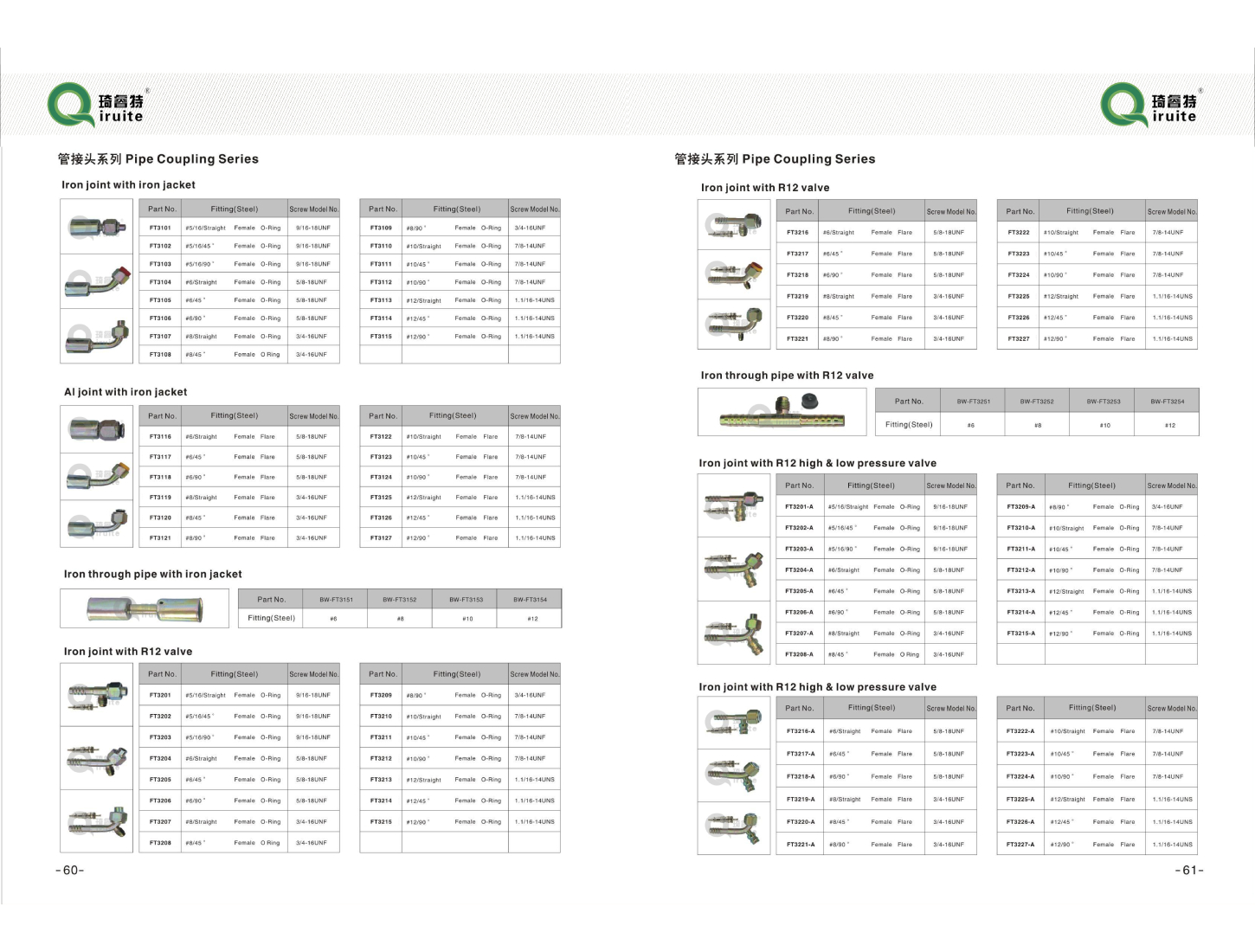power steering hose ends
Understanding Power Steering Hose Ends Importance and Maintenance
Power steering is a vital component of modern vehicles, providing the driver with ease of maneuverability and control. A crucial part of this system is the power steering hose, which transfers fluid to help manage the steering mechanism effectively. Within this system, the power steering hose ends play a significant role in maintaining pressure and ensuring fluid flow. In this article, we will explore the importance of power steering hose ends, how they function, and essential maintenance tips to keep your steering system running smoothly.
What Are Power Steering Hose Ends?
Power steering hose ends are the connections that link the power steering hoses to the steering gearbox, rack, and pinion, or the pump. These ends are typically made of metal or durable plastic and come with threaded fittings or clamps to secure them in place. The design of hose ends varies depending on the vehicle make and model, but their primary function remains consistent to provide leak-free connections that withstand high pressure.
The importance of these connections cannot be overstated. A failure in a power steering hose end can result in fluid leaks, leading to a loss of steering assist. This situation can create hazardous driving conditions, making it imperative for vehicle owners to understand the signs of wear and when to perform maintenance.
How Do Power Steering Hose Ends Work?
The power steering system operates by channeling hydraulic fluid from the pump to the steering gear or rack. When the driver turns the steering wheel, the pump pressurizes the fluid, which then flows through the hoses and into the steering mechanism. The hose ends are designed to withstand the high pressures generated during this process while maintaining a tight seal to prevent leakage.
Typically, power steering systems utilize two types of hoses the pressure hose and the return hose. The pressure hose carries pressurized fluid from the pump to the steering gear, while the return hose sends the fluid back to the pump. Each of these hoses connects to the steering components via dedicated hose ends, which must be durable and reliable to prevent failures.
Signs of Wear or Damage to Hose Ends
Regular inspection of power steering hose ends is crucial for vehicle maintenance. Drivers should look for the following signs that may indicate wear or damage
1. Fluid Leaks The most apparent sign of a problem. If you notice fluid pooling under your vehicle or around the steering components, it may indicate a failing hose end.
2. Steering Difficulties If the steering becomes stiff or unresponsive, it could be due to a decrease in fluid pressure caused by a leak or blockage at the hose ends.
power steering hose ends

4. Visible Damage Cracks, kinks, or corrosion on the hose ends are clear indicators that they may need replacement.
Maintenance Tips for Power Steering Hose Ends
To prolong the lifespan of power steering hose ends and ensure the smooth operation of the steering system, consider the following maintenance tips
1. Regular Inspections Check the power steering hoses and their ends regularly for signs of wear, leaks, or damage. It’s often recommended to inspect them during routine oil changes.
2. Fluid Levels Keep an eye on the power steering fluid levels, and top them off as needed. Low fluid levels can exacerbate wear on the hose ends.
3. Clean Connections Ensure that the connections at the hose ends are clean and free of debris. Dirt can create friction and wear, leading to potential leaks.
4. Replace Worn Components If you identify any damaged or worn hose ends, replace them promptly to avoid more significant issues down the line.
5. Consult Professionals If you’re unsure about the condition of your power steering system or the hose ends, consult with a qualified mechanic. They can perform a thorough inspection and recommend necessary repairs or replacements.
Conclusion
Power steering hose ends play a critical role in the performance of a vehicle's steering system. Understanding their function, recognizing the signs of wear, and maintaining them will help ensure the vehicle remains safe and easy to drive. Regular checks and timely replacements can save drivers from unexpected failures and costly repairs, making power steering hose ends an essential aspect of vehicle maintenance.
-
Ultimate Spiral Protection for Hoses & CablesNewsJun.26,2025
-
The Ultimate Quick-Connect Solutions for Every NeedNewsJun.26,2025
-
SAE J1401 Brake Hose: Reliable Choice for Safe BrakingNewsJun.26,2025
-
Reliable J2064 A/C Hoses for Real-World Cooling NeedsNewsJun.26,2025
-
Heavy-Duty Sewer Jetting Hoses Built to LastNewsJun.26,2025
-
Fix Power Steering Tube Leaks Fast – Durable & Affordable SolutionNewsJun.26,2025

